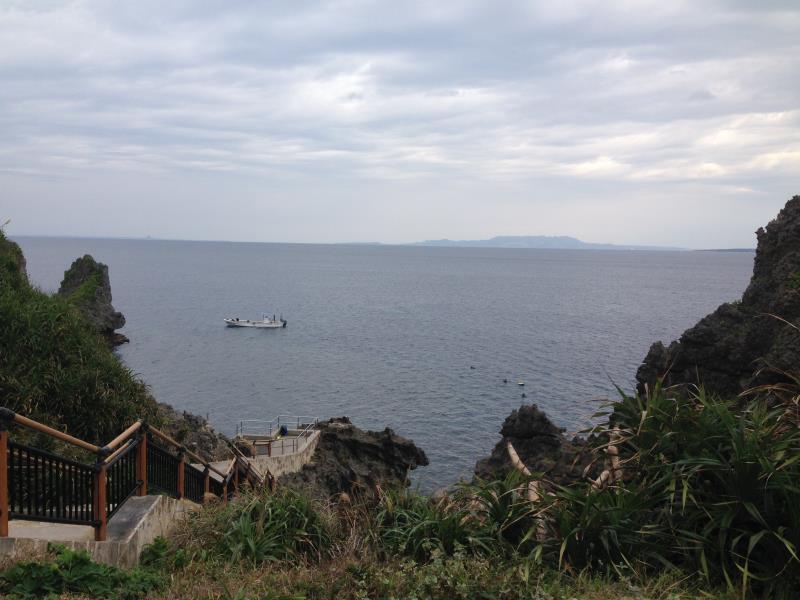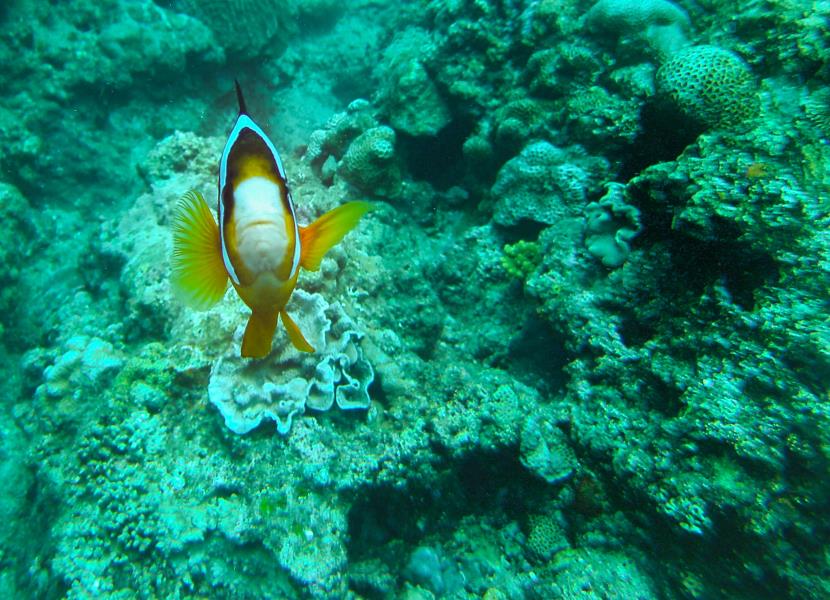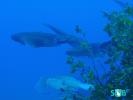 Advice on Scuba Diving in Ryukyu Islands, Okinawa and Yonaguni, Japan
Advice on Scuba Diving in Ryukyu Islands, Okinawa and Yonaguni, Japan
Part 1: Overview of Scuba Diving in Ryukyu Islands, Okinawa and Yonaguni, (Japan)
The Ryukyu Islands are a group of about 100 sub-tropical islands that make up the southern most part of Japan. The lower section of the group of islands is collectively known as Okinawa prefecture. Okinawa is not only the name of the prefecture (province/state) but also the name of the largest island – Okinawa.
The volcanic islands reach far to the south of the main islands. The southernmost island of Yonaguni is about 100 km northeast of Taiwan. The culture and history of the islands is different from mainland Japan and in some ways is more similar to Taiwan. The Ryukyu Islands stretch well below 30°N, parallel in latitude with northern Mexico and central India. Their climate is in stark contrast to mainland Japan's cool temperate mountain climate.
The island of Okinawa is historically famous for its role in WWII naval battles. The United States continues to have a strong military presence in and around the area. Some benefits of this western presence for scuba divers are the many dive shops that cater to English-speaking tourists. Westerners run many of the dive shops and almost all of the dive shops have instructors who speak English. There is an appreciation for diving in these islands and the locals take the sport seriously.
For those new to scuba diving or those looking for more than just a scuba destination these islands will not disappoint. The area is setup for tourists with attractions, resorts, and lots of restaurants and shopping. There are beaches to swim and snorkel and boat rides and fishing excursions available for sport fishing.
The many islands in the area around Okinawa offer prime scuba diving conditions. The clear waters reach around 31 degrees C (88 degrees F) in early August and drop to 20 degrees C (68 degrees F) in late February. The Ryukyu Islands offer wetsuit diving year round.
Part 2: Dive Sites, Marine Life & Environment in Ryukyu Islands, Okinawa and Yonaguni, (Japan)
Many scuba divers are drawn to Japan to explore the infamous underwater ruins off the island of Yonaguni - the western most inhabited island in Japan. Only about 100 km from Taiwan, the Yonaguni rests in warm, clear sub-tropical waters that make for spectacular scuba diving. The underwater ruins near Iseki Point, off the south central coastline of the island of Yonaguni, are famous for the megalithic structures that many believe to be ancient ruins. The dive sites around the walls and stairs of the ruins are also famous for Hammerhead sharks that inhabit the area and school in the hundreds during the winter months. Some divers have reported hammerheads as long as 15 feet to be a common sight year round.
The huge stone ruins collectively are known as Yonaguni Monument. The ruins are found in 5-40 meters of water not far offshore. The ruins, while at found at dive-able depths, are in the open ocean with no sheltering reefs to protect divers from the strong currents and often rough waters and rainy weather. The theory behind the origin of the ruins is that during the last ice age, the world's sea levels were significantly lower due to the fact that the world's water was locked up in the expanded polar ice caps. This last glacial period ended roughly 10,000 years ago when again, the world's coasts were flooded, covering the buildings and civilization that created and inhabited the strange structures. For those interested in knowing more about this theory and understanding the Yonaguni ruins check out the work of author and dive master Graham Hancock and his book, Underworld: The Mysterious Origins of Civilizations. The book features the Yonaguni ruins and other underwater ruins that Hancock and his wife explored, photographed, and wrote about.
The stone passageways and walls of Yonaguni Monument are home to large fish such as Bigeye trevally, barracuda, Dogtooth tuna, Marlin, Sailfish, as well as home to small, more delicate fish like the Pygmy seahorse and Fire dart goby. On rare occasions, divers also encounter the giant Whale shark. You can also see and swim with turtles and even visit the dive site on the monument known as The Turtle. The rock top looks like a giant carving of a turtle and can be seen near the main monument's platform. There are over 70 established dive sites in the monument to explore.
Yonaguni is not the only place to dive in Japan's far southern islands. There are great dive sites along the steep limestone cliffs just offshore Okinawa'a western shore. Off the northwest coast of Okinawa, not far from Churaumi Aquarium, an amazing attraction features whale sharks and a sea turtle pool. The turtle pool features five of the seven sea turtle species in the world. The five Japanese species of sea turtle that scuba divers can hope to see in Okinawa's surrounding waters can be seen at the aquarium; Hawksbill turtle, Loggerhead turtle, Green sea turtle, Kemp's ridley turtle and the Pacific black sea turtle - a rare subspecies of the Green sea turtles that are native to Japan. For more information about the sea turtles of Japan check out The Sea Turtle Association of Japan.
Near Churaumi Aquarium, just off Okinawa'a northwest coast is the diving area known as Motobu Area. The dive site called Gorilla Chop is accessible from the beach and fairly sheltered; it is a good place for beginner or intermediate divers. Gorilla Chop is named after a large black protruding rock. The distinctly white sandy bottom of the dive site and the many coral reef islands harbor Lionfish, and schools of Goatfish and many other reef dwellers.
Down the western coast off central Okinawa's Nakagami District is the popular shore diving area called the Sunabe Seawall. Just offshore from the cement seawall, there are ideal dive sites and abundant coral reef to explore in clear waters. Off the southern tip of Okinawa is the dive site known as the Channel Crevices. This dive site is popular because of the large shallow lagoon that is perfect to swim through and get to the outer reef that skirts the bottom of beautiful Okinawa.
Another great scuba diving area in southern Japan's Ryukyu Islands is the Kerama Islands. The group of 22 small islands is just off the southern tip of Okinawa. Four of the islands are inhabited and cater to tourists and scuba divers. The islands are beautiful but have a rough historic past; they were the staging group for the U.S. invasion and the Battle of Okinawa during WWII. Today you can get there via boat from Okinawa or fly into the small Kerama Airport on Fukaji Island.
Some of the best dive sites on the Kerama Islands are off the west coast of Tokashiki Island. You can get there via boat from Naha, Okinawa and explore this gem of an island. The dive site known as Arigaa Cable literally has old telephone cables you can follow underwater to reef where hundreds of spotted garden eels are famous for poking their many heads out of the sandy bottom. Just a bit deeper you come to a rock with corals growing abundantly where lots of Green Chromis damselfish, Coral trout, and camouflaged Leaf scorpionfish make their home. This is a great dive that gets raving reviews.
One last dive site to mention is on the uninhabited Kerama Island of Kuroshima that translates simply as ‘Black Island’. Off the north side of the small island is the dive site known as Twin Rock. These huge limestone pinnacles just break the water’s surface. Strong currents most of the year make this dive for experts only. The depths of the sea are close by and large fish such as Dogtooth tuna and Eagle rays are common sights. Another option is to dive this site offshore, staying close to the bay where the dive is better for beginners or intermediate divers. Close to shore you will find lots of reef fish and coral and in the shallow pockets between reef islands expect to see the Whitetip reef shark.
Part 3: Dive Shops, Airports & Logistics of Diving in Ryukyu Islands, Okinawa and Yonaguni, (Japan)
The island of Okinawa is the most common and logical destination for divers coming into Japan's remote southern islands. Naha Airport is Japan's 7th busiest airport; it services Okinawa from Tokyo, Taiwan, Hong Kong, Korea and China. Once in Okinawa, divers can explore the area's history and touring options and check into one of the great dive shops in Okinawa that can outfit your dives and answer questions. Reef Encounters caters to English and Japanese-speaking divers, and offers charters to wreck dives and as far as the ruins off Yonaguni. The shop also offers technical training and certification courses. Other dive shops that offer dive excursions and training in Okinawa are Asian Dive Tours, Kaifu Divers, and Viamare, which specializes in underwater photography.
While many dive shops out of Okinawa offer excursions to Yonaguni, some divers may want to get to the island and settle first. The remote island of Yonaguni, at the very southern tip of Japan, is considered a challenge as far as time and money. Those determined to really experience the mysterious underwater ruins and island for themselves fly into the small Yonaguni Airport (OGN) or ferry to the island. There are direct flights to Yonaguni departing from Taiwan's nearby Hualien Airport. Keep in mind that Taiwan is much closer than Japan's mainland international airports. There are also hop flights into Yonaguni from Ishigaki Airport (ISG). The island of Ishigaki is a nearby island and the region's largest island and the hub of the region. The best way to get to Ishigaki from Japan's mainland is to fly from Tokyo International Airport, but once again a flight from Taiwan may be a better option. For those who like to take to the open seas, Fukuyama Kaiun is a ferryboat service departing from Ishigaki Island a couple times a week. The four-hour boat ride to Yonaguni is a great way to experience Japan's southern islands.
Once in Yonaguni, the classic dive shop that so famously hosts expeditions to the famous Yonaguni underwater ruins is Sou-Wes Diving & Hotel Irifune. In fact, Sou-Wes owner and dive master Kihachiro Aratake was the individual who actually discovered the amazing underwater ruins back in 1986. The ruins are still under hot debate, whether they are man-made or natural formations. Even geologists disagree about what and how the symmetrical, megalithic formations originated. Sou-Wes dive shop offers dive tours for beginners and advanced divers and for those not wishing to get their feet wet, Sou-Wes offers glass bottom boat rides that cruise over the ruins.
The ruins really are a place that you need to see for yourself, it is one of the spots on Earth where different people see different things, and where belief is powerful. The ruins will no doubt open any divers mind and get their curiosity fired up.
---- Book Your Diving ----
Fill in the Form Below.
Our hand picked regional partners will deliver no obligation quotes.
Tweets by @DiveAdvisorApp
Top Dive Shops
Top Dive Sites
Reviews
Certifications Offered
-
Open Water Diver
Reef Encounters , Ryukyu Islands, Okinawa and Yonaguni -
Boat Diver
Reef Encounters , Ryukyu Islands, Okinawa and Yonaguni -
Drift Diver
Reef Encounters , Ryukyu Islands, Okinawa and Yonaguni




